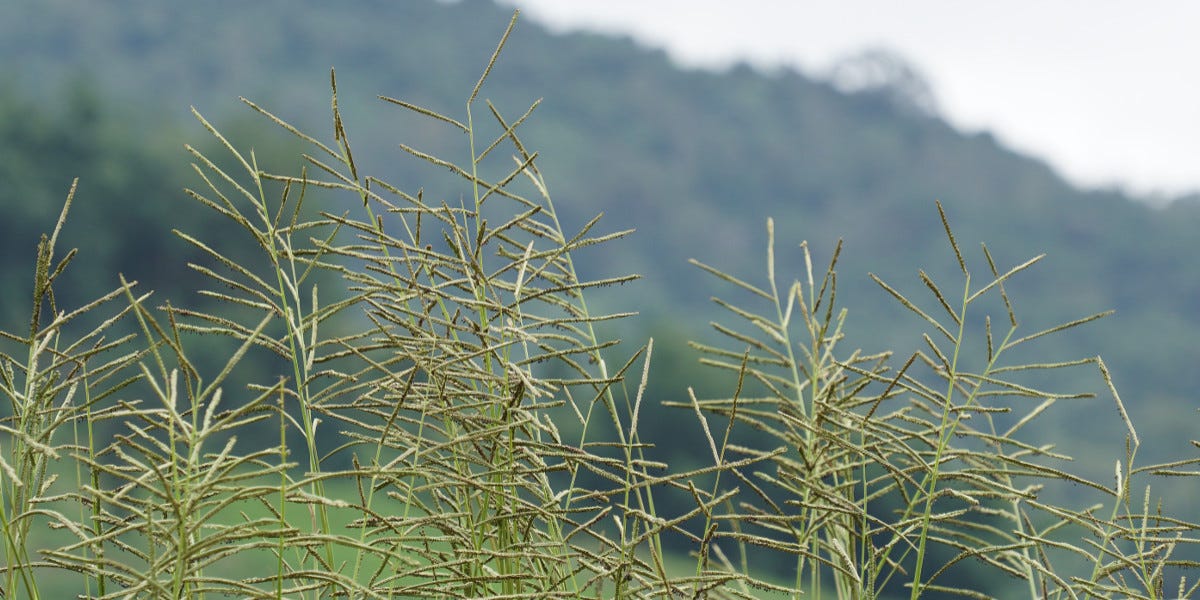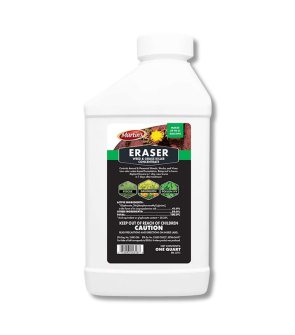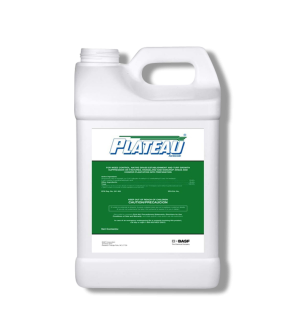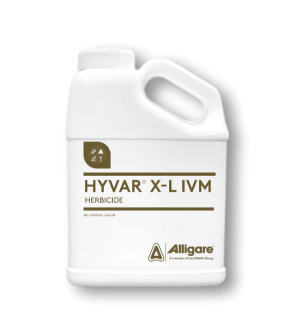Gain access to personalized product screening, the best pricing, rewards, and more!
Most Effective Products
Vaseygrass Control: How to Get Rid of Vaseygrass
This page is a general DIY guide for controlling vaseygrass. Using the products and methods suggested, you will get control of vaseygrass. Follow this DIY article and use the recommended products; we guarantee 100% control of vaseygrass.
Vaseygrass, also known as Paspalum urvillei or sometimes referred to as vasey's grass or vasey grass, is an invasive perennial grass weed that has become a serious problem in many warm regions.
This invasive grass spreads like wildfire, pushing out native plants and the good grasses you actually want. Not only does it make your yard or pasture look messy, but it also lowers the quality of forage for livestock, making pastures less productive and more expensive to manage.
Unlike many native grasses, vaseygrass has relatively shallow roots, which means it doesn’t hold soil as effectively and can contribute to erosion in vulnerable areas. It’s also notoriously difficult to manage because its tough stems and ability to regrow from root fragments mean that simple cutting or digging often isn’t enough to get rid of it.
All these factors combined make vaseygrass a serious threat to both agricultural productivity and natural ecosystems. In this article, we will explore why vaseygrass is such a challenge and share effective tips and products for getting rid of it and preventing it for good.
Identification

Before proceeding with a treatment program, you need to be certain that the weed infesting your property is vaseygrass. Careless identification can lead to using the wrong treatment methods, which can waste time and money. To know what vaseygrass looks like examine the following characteristics:
- Vaseygrass is a tall, perennial grass that grows between 3 to 7 feet tall, forming dense clumps or tufts. Typically, it's green in color. The leaves and stems are a medium to dark green, depending on the growing conditions. The seed heads are also green but may appear grayish-green or purplish as they mature.
- The leaves are long and narrow up to 15 inches in length and about half an inch wide with pointed tips and entire margins. While the leaf blades are mostly smooth, they often have long hairs near the base. The stems are upright and round, with nodes that can be either smooth or slightly hairy.
- One of the most distinctive features of Vaseygrass is its seed head, or inflorescence. It consists of 10 to 30 erect, slender branches (racemes), each ranging from 4 to 15 centimeters long. These branches bear pairs of spikelets arranged in such a way that they appear as four rows of seeds. The spikelets are small, about 2 to 3 millimeters long, and are fringed with silky hairs, giving the seed head a fuzzy appearance.
Use the description and image above to help you properly identify vaseygrass on your property. If unsure, contact us and send a photo of your weed through email or in-person at one of our store locations so we can help you identify the weed and suggest treatment options.
Inspection

Once it is confirmed that you are dealing with vaseygrass, you can move on to inspection. During this phase, you will locate areas where vaseygrass thrives and observe the conditions allowing it to succeed. This information will help you in knowing where to focus your herbicide application.
Where to Inspect
Vaseygrass is a warm-season perennial bunchgrass that grows in moist, disturbed, or open habitats.
The most common sites where you will find this aggressive grass are in ditches, along streams, pastures, hayfields, railroads, irrigation canals, forests, meadows, wetlands, and other sites prone to flooding.
What to Look For
One of the easiest ways to identify vaseygrass is by its fountain-like growth habit and ability to grow in dense, upright clumps. Vaseygrass is a warm-season species, meaning it grows actively from spring through fall, typically from May to November.
It typically flowers and sets seed between May and October, with seeding peaking in summer and early fall. During the winter months, vaseygrass goes dormant, with its leaves and stems turning brown or dying back in colder temperatures.
Treatment
Before beginning any type of herbicide application, you will need to wear the proper personal protective equipment (PPE).
Herbicides containing glyphosate, imazapyr, and certain combinations such as metsulfuron and nicosulfuron are effective in killing vaseygrass.
Step 1: Apply Eraser 41% Glyphosate
 Eraser 41% Glyphosate is a non-selective herbicide that can be effectively used to control vaseygrass, especially in non-crop areas, fence lines, or spot treatments where desirable plants won’t be harmed.
Eraser 41% Glyphosate is a non-selective herbicide that can be effectively used to control vaseygrass, especially in non-crop areas, fence lines, or spot treatments where desirable plants won’t be harmed.
Keep in mind this product is non-selective meaning it will any vegetation it comes into contact with.
To use it, mix the product with water in a handheld pump or backpack sprayer.
We recommend marking the sprayer as "Non-Selective Herbicide Only" to avoid cross-contamination with other herbicides.
Determine how much Eraser 41% Glyphosate to use by measuring the square footage of the treatment area. Find the square footage by measuring the treatment area's length and width in feet, then multiply them together (length X width = square footage).
To control vaseygrass, mix 2 1/2 oz. of Eraser 41% Glyphosate per gallon of water to treat 300 sq. ft.
Make applications as a spot treatment. Adjust the sprayer nozzle to a coarse spray pattern then spray the top and bottom of leaves until wet, but not to the point of runoff.
If you're worried about spray drift, you can place a barrier such as a cardboard box between the weed and desirable foliage during applications.
Do not mow, cut, or otherwise disturb treated vegetation for at least 7 days following application.
Visible signs of treatment may appear 2 to 4 days after application, but a complete kill can be expected within 1 to 2 weeks.
Prevention
 Once you have eliminated vaseygrass from your property, you will want to make sure it does not return. Take on the following preventative measures to prevent vaseygrass from returning:
Once you have eliminated vaseygrass from your property, you will want to make sure it does not return. Take on the following preventative measures to prevent vaseygrass from returning:
- Keep grasses dense and vigorous through proper fertilization, mowing, and irrigation. Healthy turf shades out vaseygrass seedlings. Introduce desirable grasses in bare or thin spots to crowd out this weed.
- To stop seed spread, mow before the vaseygrass sets seed and always clean equipment after working in infested areas to avoid unintentionally transporting seeds.
- Installing physical barriers (such as edging or landscape fabric) along fence lines, garden borders, or pathways can limit the vaseygrass rhizome spread into desirable areas.
- Vaseygrass often thrives in disturbed, compacted, or nutrient-poor soils. Amending soil with slow-release granular fertilizers, improving drainage, and reducing compaction through aeration can make the environment less favorable for its growth while supporting healthier, competitive vegetation.
Key Takeaways
What is Vaseygrass?
- Vaseygrass is a fast-growing, clump-forming perennial grass native to South America but considered invasive in many parts of the southern United States and other warm climates.
How to Get Rid of Vaseygrass
- To get rid of vaseygrass, it's best to use a glyphosate herbicide like Eraser 41% Glyphosate as a spot treatment.
Preventing Vaseygrass Reinfestation
- To prevent vaseygrass, maintain healthy, dense vegetation that can outcompete invasive weeds. Regular mowing, proper fertilization, and overseeding with desirable grasses can help reduce open spaces where this foliage can establish. Avoid soil disturbance, as it creates ideal conditions for seed germination. Clean equipment after use in infested areas to prevent seed spread, and mow before vaseygrass produces seeds.












